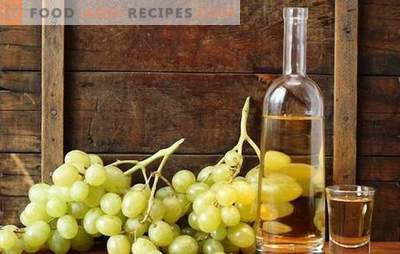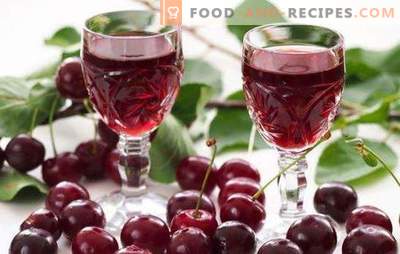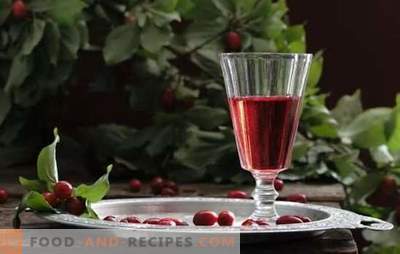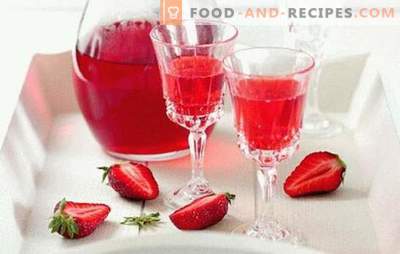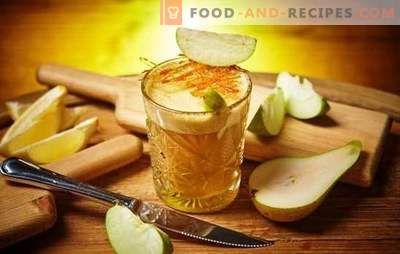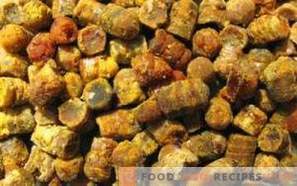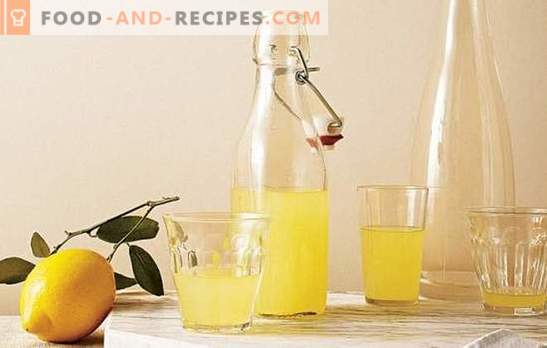
Briefly about fascinating details.
The origin of the "cultural" fruit of lemon is associated with the first Chinese emperors, or rather, with their court healers.
Another version of the origin of lemon is related to India. The history and geography of these states goes back deep into the millennia.
The two oldest civilizations on earth are famous for their deep knowledge, including in the field of medicine, so any of the versions has the right to exist. But we will leave a detailed study of this issue to historians and archaeologists and dwell on the moments that are related to the secrets of making tincture with lemon on alcohol.
As a tropical culture, lemon quickly girdled the globe and became a universal remedy not only in medicine and cooking, but also in everyday life.
Apparently, following the traditions of Chinese monks, Avicenna and the monks of the Middle Ages continued to create healing potions based on it.
For a long time, however, lemon liqueurs, like all other types, were considered exclusively medicinal. The compositions of tinctures and balms for a long time kept in the strictest confidence.
In Russia, potions were originally prepared by healers on water, and later on vodka (derived from the word “water”). Tinctures have always been very popular in Russia, and therefore their range is constantly replenished, both among the nobility and among ordinary peasants.
So that medical balms and tinctures were not too bitter, they began to add honey, and later - syrup or sugar. By the way, honey as a part of healing medicines was also given an important place as a valuable natural component.
Lemon tincture - basic technological principles
Any tincture can be prepared at home, following the example of the ancient ancestors, and no special equipment or rare expensive ingredients will be required for this. Well, maybe just a little. But nowadays, any ingredient within a few hours can be obtained right under the door by making a couple of “clicks” in the extensive network of specialized online stores. Only for a start, you still need to go through a little theoretical training in order to draw up a plan for the purchase of ingredients and materials, to think about their further use. Tinctures are divided into alcohol, water-alcohol and water, which are recently called infusions or just tea.
Why is such a classification necessary? It is known that water and alcohol are solvents, that is, extractants. Any ingredients of tinctures, be they herbs, roots, fruits or berries, when they get into the aqueous or alcoholic medium begin to dissolve (extract), transferring their elements to the liquid.
But it must be borne in mind that the beneficial properties of the same lemon are stored in water and in alcohol in different ways.
For example, vitamin C, which is rich in the fruits of lemons, has extremely unstable properties and is almost completely destroyed when heated in water above 40C. For essential oils contained in lemon, alcohol is the best solvent. Starting to prepare the tincture on lemon, you need first of all to decide on the elements necessary for the extraction: vitamins, essential oils, organic acids.
To maximize the extraction of essential oils used alcohol of the highest strength. But alcohol destroys vitamin C, as does hot water. Take into account this nuance in the preparation of tinctures with lemon on alcohol. It is necessary to understand that adding juice to tincture of lemons on alcohol is impractical because it is better to use the vitamins contained in the juice in some other way, not allowing them to be completely destroyed in the alcoholized liquid. By the way, it should be noted that the content of ascorbic acid in the peel of citruses is much higher than in the juice, but the peel insists on alcohol precisely to obtain the maximum amount of essential oils.
Taking into account that for high-quality extraction of lemon components alcohol is taken, with a strength above 70%, further dilution of the tincture depends on the requirements for the recipe. To achieve the desired degree, knowing the strength of alcohol, you can use the ratio of 2: 3, where 2 parts - alcohol; 3 parts - water. Of course, distilled water must be used for this purpose. Reduce the strength of the tincture can be added to the pre-prepared syrup, juice or water. Sometimes vodka is used for infusion, but the duration of extraction increases from three weeks to six months. If the flavor composition of rum, brandy or brandy does not conflict with the rest of the ingredients of lemon tincture, then these drinks can also be used to dissolve the essential oils of lemons. The next criterion for the choice of extractant is the appointment of the tincture. It is known that lemon essential oil is very widely used in both industrial and home cosmetology. It is a great tool for eliminating unpleasant odors in the room. Lemon juice is used as a bleaching agent, stain remover. In cooking, lemon fruits are also a versatile ingredient in the preparation of sauces, soft drinks, and confectionery.
Lemon is also included in home-made immunomodulatory tinctures, vascular fortifiers, and antiviral formulations.
If the lemon tincture with alcohol has a purely economic purpose (fragrance for linen or detergent, air freshener, cleaning agent), then, of course, sugar and other sweet ingredients are not included in its composition. In this case, the use of technical alcohol, as opposed to lemon tinctures, intended for internal use.
The next scale is the classification of tinctures by sugar content. Tinctures are bitter (they are considered masculine), sweet and semi-sweet - ladies. But this separation is not talking about the sugar content, but about the alcohol content, which ranges from 16% (for sweet infusions) to 60% - for bitters. The content of sugar in tinctures reaches 15-50%. Sweet tinctures are liqueurs, with similar manufacturing techniques.
Tincture, which include a complex herbal collection, called balm or bittner. Balms, as a rule, belong to the pharmaceutical group. The composition of those that can be found on sale in a pharmacy is easy to determine by reading the name on the label, although it is unlikely to be able to make exactly the tincture of this composition because of the complexity of the technology. Therefore, the taste and properties of such a balm will only vaguely resemble the original. To solve the secret composition of such famous balms as “Riga”, “Amaro Montenegro”, “Bitter”, “Amer Pikon” is not possible to the end, because it is a commercial secret. One-component tinctures receive, as a rule, the name of the main ingredient in its composition: anise, pepper vodka, nut, mint. The range of additives used for lemon infusions tends to expand, including through the invention of new recipes by home craftsmen.
1. Tincture with lemon on vodka - refreshing liqueur
Composition:
Alcohol 96.3% (lux) 100 mg
Peppermint (fresh leaves) 200 g
Lemons 1.0 kg (fresh peel and juice)
Sugar 600 g
Vodka 40% 400 ml
Distilled water 250 ml
Cooking:
Start liqueur production with mint tincture. Chop the fresh mint leaves, place them in a dark glass jar or an opaque dish with a tight-fitting lid. Fill the greens with alcohol so that it is completely covered with it. It is necessary to insist mint on alcohol for at least three weeks, and it is better to leave it that way before the production of liqueur. Strain the resulting hood. Wash the lemons, remove the zest, being careful not to cut off the white shell with it. Peel the lemons with boiling water, cut in half and squeeze the juice out of them. From one kilogram of large lemons should get 0.5 liters of juice. Add sugar to it, stir until dissolved. Pour the mixture into a jar (1.5 l), cover with a lid and place the pasteurization syrup in a water bath. Heat the syrup, but do not let it boil. Steam the syrup to a pair to a transparent and viscous consistency. Set aside ready syrup for natural cooling. Do not open the bank.
Put the cut off zest into a separate jar and, having tightly closed it, put it in a dark place for not less than ten days. After that, strain the vodka, pour into it the strained mint tincture. Stir. Pour the alcoholic extract into water, mix thoroughly again and then pour the composition into the syrup. Liqueur once again stir. It can be stored in one large jar or bottled and sealed, but be sure to give time for infusion (not less than a month) to get a uniform taste. Ideal exposure period - from 6 months to a year.
2. Lemon tincture on alcohol - extract for baking and other dishes
Often, alcoholic additives used in baking, with their help bring to the taste of meat dishes.
To prepare such an extract can be at home, especially if you are busy harvesting lemon juice. It is possible to collect a sufficient amount of lemon zest gradually, each time cutting it from lemons in the process of making marinades, sauces, and tonic drinks. Cut the dried peel to a deadline in a sealed package in the freezer. Composition:
Refined oil (odorless) 50 ml
Lemon zest, fresh 300 g
Alcohol 96% 50 mg
Cooking:
Put crushed zest in a small bowl, mix with oil, pour in alcohol. Composition mash hands or pestle to highlight the juice and shift to the jar. Close the lid, in the center of which insert a plastic tube into the slotted hole. Put the second end of the tube in a glass vial and fix it tightly (tie it with a bandage dipped in a liquid mixture of flour and water. Place the jar in a large saucepan with water, put pressure on it so that it does not turn over during boiling. Put the saucepan on the fire and let it boil. Place another pan or bowl next to the stove, fill it with ice and draw a plastic tube connecting the jar and vial through it. When the pan is heated on the stove, steam will go out of the jar through the cooling tube it will turn into a liquid and flow into a vial. In fact, this device is a self-made distillation apparatus. In this way, extracts from any raw material containing fragrant essential oils can be obtained. The finished extract will only close tightly, remove the tube from the vial and put it in a dark place .
3. Tincture with lemon and garlic: from the piggy bank of popular recipes
Prepare a popular infusion, which in the early spring will help to cope with avitaminosis, increase the body's immunity against viruses. Do not be alarmed that it contains garlic. This peculiar smell in the tincture is absolutely not noticeable.
Composition:
Prepared water 0.5 L
Lemons 1 kg
Garlic 300g
Vodka (40%) 2 liters
Linden honey (fresh) 1.0 l
Rosehip (dried fruit) 250 g
Cooking:
Crush the prepared garlic and lemons. Fold the mixture in a jar with a capacity of at least 5 liters and add the hips. You can use not dried fruits, but in this case their number should be increased. It is better to make the can opaque: for this, wrap it with a layer of foil. Boil the water and immediately pour it into the jar, stir the mixture. Wrap to create a thermos effect. When the mass has cooled to 30-40C, add honey and stir again. Pour vodka into the cold mixture. Keep the jar in a dark place, tightly closed for at least 10 days. It is better to filter through cotton wool wrapped with a layer of gauze. You can not give children and adults with individual intolerance to one or more ingredients.
4. Tincture with lemon and honey “Taiga”, bitter
Composition:
Ethyl alcohol (96%) 700 ml
Lemons 1.5 kg
Water prepared 330 ml
Rosehip (fruit)
Kalina (juice)
Orange peels
Raspberries (dried flowers, leaves and berries)
Pharmacy Chamomile
Calamus root
Plantain leaf
Mint
Birch buds
Ginseng root
Honey, flower 900 g
Cooking:
This tincture will need small jars according to the number of dry ingredients. Dry herbs, roots and fruits in equal quantities, carefully chop and place separately on banks. Also, by the number of cans, separate the alcohol and pour it into each container. Stir, hermetically sealed jars and store for long-term storage away from light.
At the second stage of preparation, thoroughly clean the prepared tinctures from precipitation, passing it through the filter. Combine, adjusting the taste of the future tincture at your discretion: add richer flavors of tincture, if desired, in smaller quantities. Let the ingredients brew together again (15-20 days). At the same time, insist on drinking purified lemon zest.
Mix lemon juice with water and boil. In the cooled broth, place the honey, stir, pour into containers with lids and freeze until the moment when the infusion of lemon zest is ready.
Thawed honey-lemon drink combine with tincture on lemon zest, pre-clearing it from impurities. Add the prepared herbal extract. All liquid is poured into bottles, sealed. Warm them up to a couple to 60-70C, cool them and put them in a closet or closet.
5. Lemon tincture - famous Italian “Limoncello”
Tinctures are prepared not only for medicinal purposes. A significant amount of sugar in the recipe indicates that the prepared beverage is intended to be used as an aperitif or as an addition to the dessert. In addition, a high fortress translates tincture in the category of liqueurs.
Composition: Sugar and purified water in equal proportions;
Alcohol 96.3% 500 ml
Lemons 1.2 kg
Cooking:
Cut the zest and put it in a jar of alcohol. Cork up that alcohol did not evaporate. You need to endure as long as there is enough patience, but you can limit yourself to five days. At 0.5 liters of alcohol you need at least 150 g of fresh peel.
Prepare sugar syrup as usual. In the cooled syrup pour strained tincture. After that, soak the drink for at least 5 days. To liqueur became opaque and homogeneous. Pour it into a blender and perebeyte. Bottled and placed in the freezer. After another five days, he is ready to eat, and it is better to drink it in a very cold form, immediately after removing the bottle from the freezer.
6. Tincture of lemons on vodka, saffron
Composition:
Wheat vodka 0.75 l
Lemon zest 200 g
Saffron 3 g
Water 250 ml
Sugar 150 g
Cooking:
Pour vodka lemon zest, chopped into mush. Combine the prepared extract with syrup: tincture can be drained after 2-3 weeks.
Pre-brew saffron with boiling water and dissolve sugar in the same water. Bring the syrup to a boil and pour 50-100 ml of fresh lemon juice to brighten. In the cooled syrup pour infusion and soak for 3-5 days.
7. Tincture with lemon and ginger
Composition:
Ginger root 50-70 g
Lemon 300 g
Sugar 250 g
Alcohol, undiluted 350 ml
Purified water 200 ml
Clove 5 g
Cooking:
Peel the ginger root and fresh lemon zest chop with a blender. Put the mixture in a jar, add a few clove buds and fill with alcohol. Close the lid. Heat the mixture to a couple to 50-60C. Cool directly in the same pan and repeat the operation two more times. Connect the cooled tincture with the prepared syrup.
For syrup: From peeled lemons, squeeze the juice, add water and add sugar. Bring the mixture to a boil and cook for 10 minutes over low heat.
Lemon Tincture - Tips and Tricks
- When mixing liquids to make tinctures, do not forget about the rule: you need to pour a stronger liquid into a less strong, and not vice versa: alcohol - into vodka, water or juice.
- Lemon tincture can be added to soups. Alcoholized extract greatly improves the quality of yeast-free dough. The smell of tincture adds a delicious aroma and a beautiful ruddy crust of baked pork and poultry.
- If it is necessary to cut off the zest, and the preparation of citrus juice at this stage is not included in the plans, then peel the fruit and freeze it in a sealed package. When you need juice, just remove the bag from the freezer and defrost it without printing it. Freezing allows you to get more juice with minimal time.

